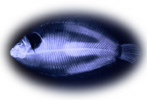|
|
 |
Frequently Asked Questions (FAQ)
Q: Is it "sole" like the shoe or "sole" like the fish?
A: If you understand, things are just as they are; if you do not
understand, things are just as they are.
Q: Where can I download SoleSeek?
A: Currently, SoleSeek is in development. This means that the project
team does not yet believe it is stable enough or feature-complete enough
for a general release. This is not to say that you cannot run it. It
simply means that binary distributables are not yet available.
Q: I don't want to wait for a packaged release. How do I get the source
code so I can compile and run it now?
A: First, a warning. You will be downloading in-progress code which
may contain major bugs. If you pay attention to the devloper
mailing list, you might have a better general idea of the code stability.
If you are still interested, check the build
instructions
Q: It's hard to tell what is going on. The program does not seem to
give enough status information.
A: Status information is rather weak in the UI at this time. Most of the
important or interesting status messages are written to the console.
Q: How do I activate the console so that I can see all of the
status messages?
A: The console application is located on your hard drive in the
/Applications/Utilities folder. Launch it before launching
SoleSeek so that you can get all of the status and debug messages.
Q: I think I found a bug.
A: First, check that you are running the latest code: check out or update the source
code, then rebuild it, then run it. Next, consult the
open
bug database to see if somebody else has already reported the issue. If nobody
has reported it, feel free to enter the bug report. Try to include as much
information as possible. Do not simply say "it crashed." Explain the exact
circumstances under which it crashed: What were you doing at the time? What had
you done recently? Were you downloading? Uploading? Were search results coming
in? Were you even connected to the server? Try to include enough detail so that
a developer may be able to reproduce the circumstances under which the bug
occurred.
|
|
|

